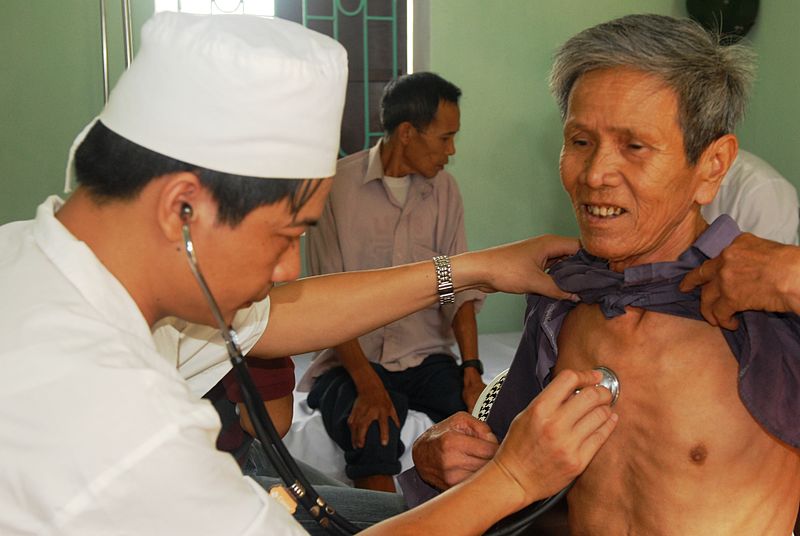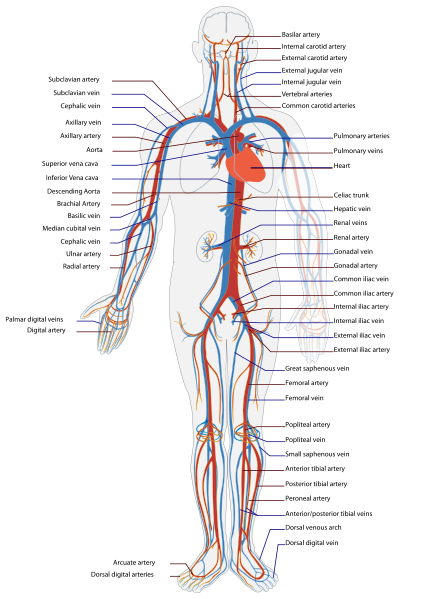 Gastrointestinal examination comprises of:
Gastrointestinal examination comprises of:
General Physical Examination:
1. Hands:
a. Erythema
b. Leuconychia
c. Clubbing
d. Dupuytren’s contracture
e. Spider nevi
2. Wrist:
a. Pulse
b. R.R
3. Arm:
a. BP
b. Temperature
4. Axilla:
Lymph nodes: Lift the arm over the with the hand of same side and with other hand’s palm facing the chest of the patient, fingers are pushed in the apex of the axilla to look for central and apical group, then arm of the patient is lowered and medial and anterior group are examined. After this ipsilateral hand is used to palpate lateral group over the humerus and posterior group (moving the thumb and index finger making a ring over the posterior axillary fold).
5. Head:
a. Pallor
b. Jaundice
c. Central cyanosis
d. Coating of tongue
e. Dehydration
f. Angular stomatitis
6. Neck:
a. CVP
b. Carotids
c. Lymph nodes
7. Shoulders:
a. Spider nevi
b. Gynaecomastia
c. Pruritis
8. Ankle:
a. Edema
9. Back:
a. Bilateral Crepitations
b. Sacral edema
Abdominal Examination:
1. Inspection:
From foot end
a. Scars
b. Distention
c. Shape of abdomen
d. Shape of umbilicus
e. Skin changes
f. Pulsations
g. Peristalsis
h. Prominent veins and direction of movement
i. Movements
j. Pubic hair
k. Hernial orifices
2. Palpation:
Patient is asked about any pain and hands are warmed. The painful area is palpated after other regions and pattern of palpation is modified accordingly.
a. Superficial
b. Deep
In the ‘S’ pattern with arm and wrist at horizontal plane (even if you have to bend) and hand flexed at metacarpophalangeal joint only and moulded to fit the abdomen. Look at the patient throughout looking for any sign of tenderness. In obese and muscular patients other hand can be used to apply pressure. If abdomen is not relaxed, legs can be flexed.
i. Tenderness
ii. Rebound tenderness
iii. Mass
c. Organ specific palpation:
i. Liver:
1. Start from right iliac fossa, feeling with radial border of index finger. Patient is told to turn his face towards the left side and take deep breaths through the mouth. Don’t lift your hand off the abdomen. Keep moving above towards right hypochondriac region. When lower edge of liver is felt, it is marked and upper border is found by percussion and span of liver is measured in midclavicular line.
ii. Spleen:
1. Similar to liver but moving diagonally towards the left hypochondriac.
2. If spleen is not palpable left hand can be used to provide support to left costal margin.
3. If still spleen Is not palpable then patient is asked to shift towards right side.
iii. Right Kidney
iv. Left Kidney
v. Abdominal aorta
vi. Femoral artery
vii. Hernial orifices (cough impulse)
viii. Inguinal hernias.
d. Auscultation:
i. Bowel sound in right iliac fossa at the level of ileocecal valve
1. Latency
2. Frequency
ii. Bruits
e. Percussion:
Abdomen is percussed in ‘+’ pattern.
i. Liver
ii. Spleen
iii. Shifting dullness
iv. Fluid thrill
f. Back:
i. Spine tenderness
ii. Paraspinal spaces tenderness
iii. Renal punch
g. Digital rectal examination
h. Examination of genitalia
 howMed Know Yourself
howMed Know Yourself



